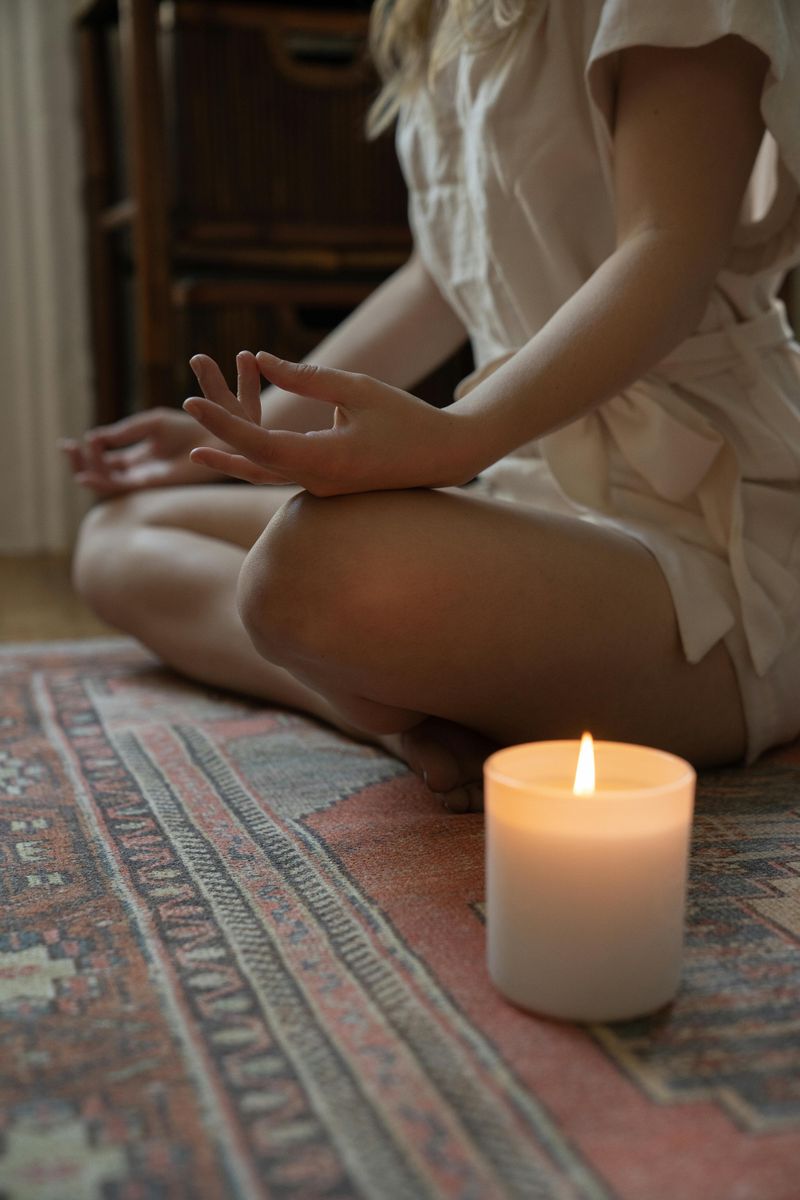These 12 Micro-Habits Help People Stay Calm No Matter What

Life throws curveballs when we least expect them. Stress and anxiety can ambush us anywhere – during work meetings, family gatherings, or even quiet moments alone. The good news? You don’t need complicated techniques to stay centered. Simple micro-habits, practiced regularly, can transform how you respond to life’s challenges and help you maintain calm regardless of what’s happening around you.
1. Pause for Five Deep Breaths

Your breath is a powerful tool that’s always available. When stress hits, stop whatever you’re doing and take five deep, intentional breaths. Inhale slowly through your nose, hold briefly, then exhale completely through your mouth.
This quick reset activates your parasympathetic nervous system – the body’s natural calming mechanism. Blood pressure drops, heart rate slows, and tension melts away almost immediately.
The beauty lies in its simplicity – no special equipment or private space needed. Just five breaths can create enough mental space to respond thoughtfully rather than react emotionally.
2. Practice Cyclic Sighing

Feeling overwhelmed? Try cyclic sighing – a scientifically-backed breathing pattern that calms your nervous system faster than standard meditation. Inhale through your nose, take a second shorter breath to fill your lungs completely, then exhale slowly through your mouth.
Researchers at Stanford University found this technique reduces anxiety and improves mood in just minutes. The double-inhale pattern sends a powerful relaxation signal to your brain.
Five rounds is all you need. Many people report feeling significantly calmer after just the first cycle, making this perfect for high-stress moments when you need rapid relief.
3. Light a Candle and Focus

Ancient yogis discovered something modern science now confirms – gazing at a candle flame calms the mind remarkably well. This practice, called trataka meditation, works by giving your busy brain a single, soothing point of focus.
Simply light a candle in a draft-free space. Sit comfortably and gaze softly at the flame for 30-60 seconds. Allow your breathing to naturally slow as you watch the gentle flicker.
The steady flame helps quiet mental chatter while the warm light activates your body’s relaxation response. Many people find this especially helpful before bed or during particularly stressful days.
4. Let Music Melt Away Tension

Music bypasses your rational brain and speaks directly to your emotions. When anxiety strikes, play a song that reliably soothes you – whether it’s classical Bach, ambient nature sounds, or your favorite ballad.
Sound waves physically affect your body. Calming music lowers cortisol levels and can reduce anxiety by up to 65% according to some studies. The familiarity of beloved songs provides comfort during uncertain times.
Create a “calm down” playlist now, before you need it. Even 90 seconds of the right music can shift your emotional state dramatically, making this one of the most accessible stress-busters available.
5. Connect With Nature Physically

“Grounding” isn’t just a metaphor – it’s a physiological reset button. When stress overwhelms you, step outside barefoot and literally touch grass, soil, or sand with your skin.
This practice, sometimes called earthing, has surprising scientific backing. Your body exchanges electrons with the earth, potentially reducing inflammation and cortisol levels. Many people report immediate relief from anxiety and racing thoughts.
Can’t get outside? Touching a houseplant, holding a stone, or even looking at nature photos provides similar benefits on a smaller scale. The key is mindful connection with something natural, even briefly.
6. Clear Energy With Selenite

Feel weighed down after difficult interactions? Many find relief through a quick energy sweep using selenite, a crystal known for its purifying properties. Hold a selenite wand or palm stone and visualize it combing away negative energy from your aura.
Start at your head and move downward with sweeping motions, never touching your body but working a few inches away. Many report feeling lighter and clearer almost immediately.
Skeptical? Consider it a mindfulness tool rather than magic. The ritual itself creates a moment of pause and intention that helps reset your emotional state, regardless of whether you believe in crystal energy.
7. Heart Coherence Check-In

Your heart generates an electromagnetic field that affects your entire body. When you’re stressed, this field becomes chaotic. A simple hand-to-heart check-in can restore order remarkably quickly.
Place one or both hands over your heart center. Breathe slowly while focusing on feelings of appreciation, gratitude, or love – any positive emotion works. Research from HeartMath Institute shows this simple practice synchronizes your heart rhythm, brain waves, and hormonal system.
The gentle pressure on your chest activates your vagus nerve, triggering relaxation. Many find this especially helpful during social anxiety, before important conversations, or when feeling overwhelmed by emotions.
8. Smudge Away Negative Vibes

Burning sage or palo santo creates more than just a pleasant aroma. This ancient practice, used across cultures for centuries, may actually purify the air by releasing negative ions – similar to what happens after a thunderstorm when the air feels refreshed.
Light your chosen smudging herb and let it smolder. Wave the smoke around your body or throughout your space with clear intention to release stagnant energy.
The ritual itself serves as a pattern interrupt for anxious thoughts. The act of cleansing your environment symbolically cleanses your mind, creating psychological space for calm to enter even during challenging circumstances.
9. Create a Quick Gratitude List

Gratitude physically rewires your brain. When anxiety strikes, pause to list three things you’re thankful for – either mentally, verbally, or in writing. They can be as simple as “clean water” or “comfortable shoes.”
This micro-habit forces your brain to shift from threat-scanning to benefit-finding. Neurologically, you cannot be in a state of appreciation and fear simultaneously. The key is specificity.
Rather than “I’m grateful for my friend,” try “I appreciate how Sam listened to me yesterday.” This level of detail activates your brain’s reward centers more effectively, creating an immediate emotional shift regardless of external circumstances.
10. Speak Blessings Into Your Space

Words carry energy. When tension builds, try speaking positive intentions aloud in your environment. Simple phrases like “Peace fills this room” or “May harmony dwell here” can shift the atmosphere surprisingly quickly.
The vibration of your voice literally changes the air around you. More importantly, verbalizing your desired state helps your brain begin creating it internally.
This practice works well when entering challenging spaces – before meetings, difficult conversations, or when returning to a home that feels heavy. The words themselves matter less than your intention behind them. Speak as if you’re gently but firmly establishing new conditions.
11. Practice Spiritual Surrender

Sometimes calm comes through letting go rather than trying harder. When overwhelmed, try a brief prayer or surrender practice addressed to whatever higher power resonates with you – God, Universe, Higher Self, or simply Life.
The words can be as simple as “I release this worry to you” or “Help me see this differently.” Research shows this type of spiritual coping reduces anxiety by activating parts of the brain associated with peace.
You don’t need religious beliefs to benefit. The psychological act of symbolically placing your burden elsewhere gives your nervous system permission to relax. Many find this especially helpful with situations beyond their control.
12. Take Mindful Micro-Breaks

Full mindfulness doesn’t require 30-minute sessions. Brief moments of complete presence – as short as 30-90 seconds – can reset your nervous system throughout the day.
Set random reminders on your phone or use transitions (like before meals or after bathroom breaks) as cues. For those seconds, give full attention to one thing: your breath, the sensations in your hands, or sounds around you. This practice interrupts autopilot mode where anxiety thrives.
Each micro-break creates a tiny gap between stimulus and response, building your capacity to stay centered regardless of circumstances. Many find these brief pauses more practical and effective than longer meditation attempts.

Comments
Loading…